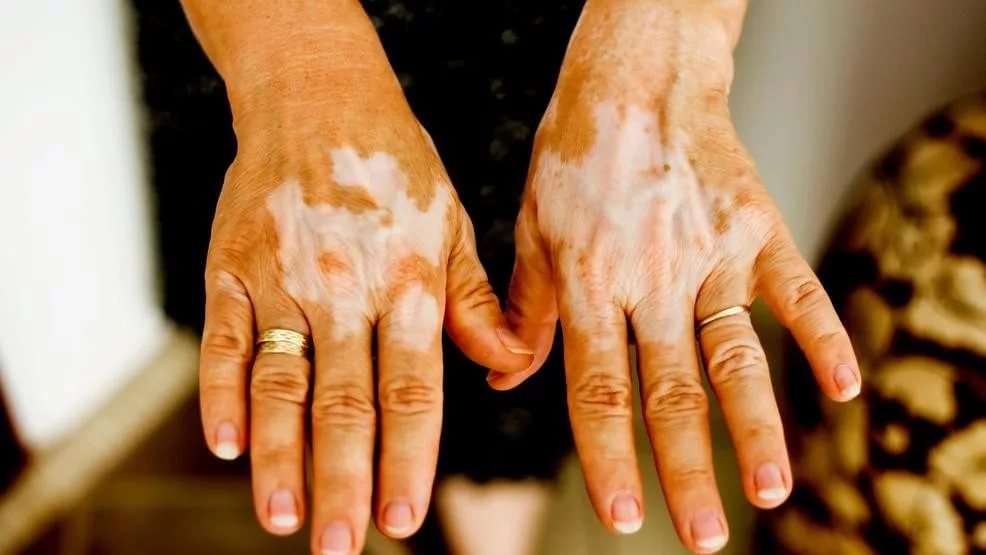One in every eight adults has suicidal thoughts over their self-esteem concerns. We are living in strange times, now more than ever many of us are being humiliated over body image. Studies showed that the mental health of 26% of people is being affected by skin conditions. Vitiligo is one of these conditions, which may not be life threatening or painful but may have psychological consequences.
Vitiligo or more commonly known as “Phulbehri” is a skin pigmentation disorder in which pale white patches appear on skin.
And having said that, Vitiligo or Phulbehri Treatment in Peshawar is one of the most sought after skin treatments in Peshawar Our skin color depends upon the amount of a pigment known as melanin. Vitiligo develops when the cells that are responsible for producing melanin either die or stop working.
Broadly there are 5 types of vitiligo. The common type is Generalized, in which the white patches appear all over the body. Segmental is when the patches appear on certain areas. If vitiligo does not spread and stays on one spot, it is known as Focal. Trichrome vitiligo is when the patches vary between normal and totally depigmented areas. It is called Universal when at least 80% of the skin is decolorized.
How Does It Develop
As per dermatologist ad Skin Specialist in Peshawar, The occurrence rate of vitiligo is up to 2% worldwide. It can affect any gender and any skin color. It usually develops in early life and almost always shows up before the age of 40. Usually doctors diagnose vitiligo by examining medical history, a physical exam, and doing certain tests like biopsy and blood tests.
Unfortunately, until it is unknown what causes this loss of pigment. Different researches have shown varying results most common of which are:
- Autoimmune disorder. A medical condition in which immune system mistakenly damages certain parts or cells of body
- It is believed that it may be a family disorder.
- Sunburn is considered to be a trigger factor
- There is a very minor chance that stress may affect the development of vitiligo
- Skin trauma. Cases have been reported about vitiligo development due to chemical exposures.
Vitiligo symptoms include:
- White spots and patches that usually first appear on face, neck, hand, armpit, and genitals.
- Early whitening or greying of body hair.
- Decolourization of inner tissues of mouth and nose.
- Itching before a new spot develops.
How To Make It Gone
There is no known cure for “phulbehri” or Vitiligo. There are treatments which can help restore some of the skin tones but that completely depends upon the nature and extent of the white patches.
Corticosteroids are used effectively in the treatment. Studies have shown the effectiveness in 54% adults and 64% childhood vitiligo patients. Phototherapy is another effective procedure in which ultraviolet rays are used. The idea is to use the filtered UVB rays to stimulate and develop the number of melanocytes —cells responsible for skin color. Photo-therapy is a painless procedure with short therapies that can restore skin tone or prevent new patches.
If the medications or photo-therapy is not effective, some patients are suitable candidates for surgery. The type of technique varies according to the intensity of white patches. Commonly used techniques are skin grafting, bristle grafting, and cellular suspension transplant.
Depigmentation is another alternative but it is mostly used in universal vitiligo in which the patient is extensively affected. In this procedure, agents are used to remove the skin pigmentation. It is a slow 1-3 years procedure and is avoided in children less than 12 years of age.
Myths and Facts From Phulbehri or Vitiligo Patients In Peshawar
Vitiligo can be hereditary or genetic or family disorder but it is not contagious, which means it can not be transferred through close contacts with the patient.
Vitiligo is not related to any race or skin color. It can affect people without considering ethnicity.
There is no scientific evidence to prove that drinking milk over eating fish can cause vitiligo. In fact studies have shown that there is absolutely no connection between diet and vitiligo.
It is quite impossible that it will disappear on its own without any medical treatment.
We are always taught to be comfortable in our own skin but the societal pressure doesn’t let us. Although there is no known cure which can completely stop the process of vitiligo, you can always even out the tone of your skin. Depending on the nature of vitiligo, you can always have fruitful results from various procedures. Every case is different so concerning a dermatologist for your skin is the best gift you can give to yourself.

